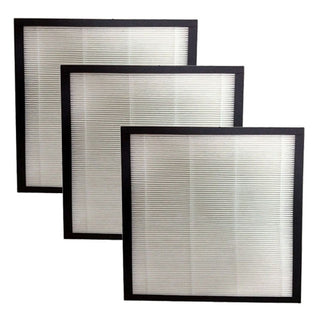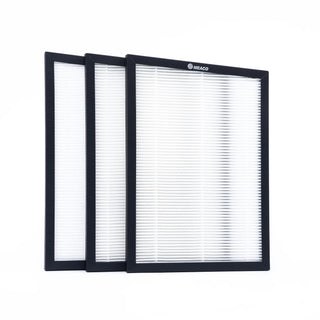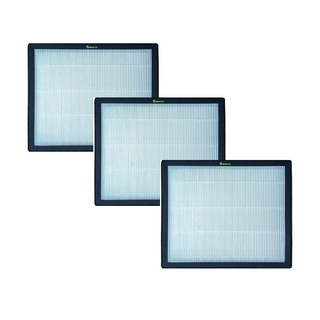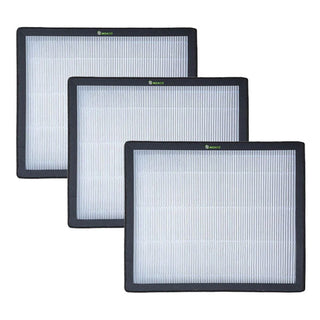
Meaco HEPA Filter for 20 Litre Platinum Dehumidifier - Pack of 3 - MEAHEPA20
£33.95
£23.00
(inc. VAT)

Meaco HEPA Filter for 12 Litre Platinum Dehumidifier - Pack of 3 - MEAHEPA12
£33.95
£29.95
(inc. VAT)

MeacoDry Arete Range H13 HEPA Filter For 20/25L Models - 3 Pack - MEAHEPAH13
£39.95
£36.00
(inc. VAT)

MeacoDry Arete Range H13 HEPA Filter For 12L Models - 3 PACK - MEAHEPAH13-12L
£39.95
£29.00
(inc. VAT)
What is a Hepa Filter?
A HEPA (High-Efficiency Particulate Air) filter is a type of mechanical air filter that is highly effective at capturing microscopic particles. HEPA filters are a crucial component in many air purifiers. Air purifiers with HEPA filters are known for their ability to significantly reduce indoor air pollutants, making them popular in homes, offices, and healthcare settings. HEPA filters are designed to remove particles as small as 0.3 micrometers with an efficiency of 99.97% or higher. This high level of efficiency makes them effective at capturing a wide range of airborne contaminants and an essential feature to look out for when purchasing an air purifier or air filter.
When Should I Replace My Air Filter?
The frequency at which you should replace the HEPA filter in your air purifier depends on several factors, including the type of air purifier, the level of air pollution in your environment, and the manufacturer's recommendations. Here are some general guidelines to help you determine when to replace your HEPA filter:
Follow the guidelines provided by the manufacturer of your air purifier. They often specify the recommended air filter replacement schedule based on the model and usage. This information can typically be found in the user manual or on the manufacturer's website.
Many modern air purifiers come with an air filter replacement indicator. This feature monitors the usage and signals when it's time to replace the filter. Pay attention to this indicator to ensure timely replacements.
Check the condition of the HEPA filter regularly. If it appears visibly dirty or discolored, it may be time for a replacement. Keep in mind that not all contaminants are visible, so the absence of visible dirt doesn't necessarily mean the filter is still effective.
Consider replacing the filter at the change of seasons or during periods of higher allergen levels. This can help ensure optimal performance during times when indoor and outdoor air quality may fluctuate.



